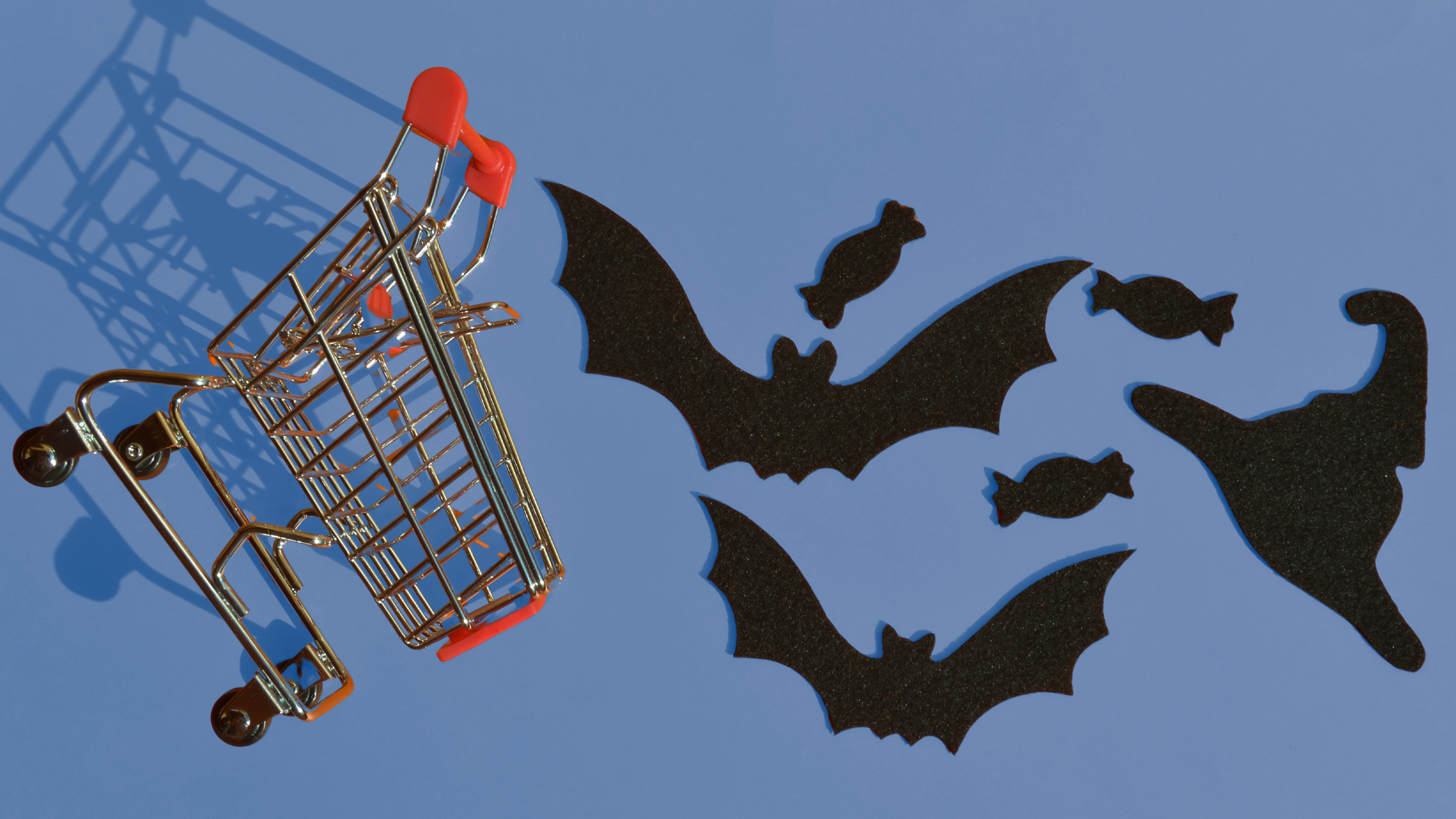It’s October. Here’s What Should Already Be Done.
Introduction: October Is No Longer “Prep Season”
For years, October was the calm before Q4 chaos, a time for final tweaks, not full activation. But 2025 changed that.
Holiday shoppers are starting earlier, campaigns are launching sooner, and creative cycles are compressing. This month is no longer a teaser. It’s the engine of Q4.
According to Passport’s global commerce outlook, 96% of brands expect international growth in Q4, yet only 31% feel ready to manage it. That gap tells the story: optimism is high, but execution is lagging.
In a year where ad costs rise by the week and buyer attention shrinks by the scroll, October isn’t for waiting, it’s for winning early.
This is the month to ensure every system, asset, and message is already working. Here’s what should already be done.
-
Inventory and Logistics Under Control
Before you launch another campaign, confirm your infrastructure can handle success.
High-performing Q4 brands aren’t the ones with the best discounts, they’re the ones who never run out of stock.
- Run a critical stock audit: Review your top 20 SKUs by velocity and margin. Place replenishment orders now to avoid the November crunch.
- Validate delivery windows: Confirm supplier, shipping, and fulfillment capacity under stress conditions. If your average delivery time doubles during peak weeks, your conversion rate will drop, even with heavy promotions.
- Strategic repositioning: If you sell across regions, reassign inventory to logistics hubs closer to your main buyer clusters. Reducing delivery time by one day can improve conversion rates by up to 22% in competitive categories (Mercury 2025).
October is your last window to correct logistics before volume spikes.
-
Creative Audit and Campaign Assets Ready to Go
Creativity isn’t optional this quarter, it’s a performance driver.
Research from Hippist AI shows that refreshing product imagery before the holiday season can lift CTR by 18–27%. Shoppers notice what’s new, and algorithms reward it.
- Audit your visual library: Every core listing or ad set should have at least six high-quality images that align in lighting, tone, and context.
- Prepare “deal-state” variations: Build overlays, price tags, and countdown templates in advance. You shouldn’t be designing assets at midnight during Cyber Week.
- Test creative variations now: Use small-budget experiments in October to see what hooks, colors, and formats perform best. Let data, not instinct, guide your Q4 bets.
- Leverage AI where it fits: New LLM-powered creative tools can help you generate and A/B test copy variations faster, turning creative iteration into a measurable science.
-
Campaigns and Segmentations Ready to Scale
If your Q4 ads aren’t already running test cycles, you’re behind.
Brands that treat October as a soft launch month will have sharper insights when ad costs surge in November.
- Run pre-Black Friday awareness campaigns: Don’t wait for discounts to drive visibility. Launch engagement creatives early to build audiences you can retarget profitably later.
- Align performance expectations: Lock in your target ROAS, CPA, and budget distribution before costs spike. Adjusting strategy mid-Black Friday week is like changing tires at 80 mph.
- Check your tracking: Audit GA4, Meta pixels, and ad tags. Attribution errors can distort ROI just when every dollar counts.
- Segment intentionally: Identify loyal buyers, lapsed customers, and first-time audiences separately. Tailor creative and offer tone by relationship stage, not one-size-fits-all.
-
Optimize Your Site for Conversion, Not Just Traffic
If your site can’t handle the pressure, all that paid media goes to waste.
- Speed check: Run mobile load tests, aim for under 2 seconds. According to Sixth City Marketing, every extra second can reduce conversions by up to 20%.
- Simplify the checkout: Reduce friction: autofill, one-click payments, clear shipping info. Stress test your checkout flow with live users or internal teams.
- Seasonal micro-UX: Add urgency banners (“Limited stock,” “Ships before Black Friday”) and short-term deals. These cues trigger conversion spikes without changing your core offer.
- SEO meets CRO: Update landing pages with holiday keywords, fresh meta descriptions, and structured schema for promotions. October content should already be discoverable and conversion-ready.
-
Content and SEO: It’s Now or Never
Your content calendar for Q4 shouldn’t start in November.
- Publish early seasonal content: Gift guides, comparison posts, and “Top 10” articles should already be live, they take weeks to index and rank.
- Review existing pages: Remove outdated links, fix redirects, and ensure seasonal URLs (like /holiday-sale or /gift-guide) are crawlable.
- Strengthen internal linking: Drive authority from evergreen pages toward high-value seasonal content to lift visibility faster.
- Reinforce schema markup: Add structured data for pricing, offers, and reviews, key signals for AI-driven search experiences and Google’s AI Overviews.
October content is the groundwork for November reach.
-
Team Alignment and Internal Readiness
Even the best campaigns collapse without operational alignment.
- Secure extra support: Hire or schedule seasonal help for customer service and fulfillment, long response times can kill retention momentum.
- Train for agility: Give teams playbooks for fast decision-making during Q4. Everyone should know who owns creative changes, discount approvals, and logistics escalation.
- Centralize communication: Create a campaign calendar that unites design, operations, and marketing. Misalignment costs real money when every hour counts.
- Pre-schedule where possible: Emails, social posts, and remarketing sequences should be queued now. Your team’s focus in November should be monitoring performance, not chasing assets.
-
Learn from the Early Movers
Some brands are already proving that early activation pays off.
In Vogue Business, beauty brands are running Black Friday campaigns as early as late September, offering curated gift sets and “holiday pre-sale” experiences that extend through December.
This approach builds awareness before competition peaks, and captures shoppers with limited budgets before they disappear into November’s discount noise.
October Is the New November
The biggest misconception about Q4 is that it starts with Black Friday. In 2025, it starts now.
October is when algorithms stabilize, logistics mature, and buyers begin their emotional journey toward purchase. Every delay costs momentum.
By the time your competitors are launching in November, the winners will already have:
- Collected weeks of conversion data.
- Optimized creative and offers.
- Trained algorithms with real audience signals.
- Built brand visibility ahead of ad inflation.
The brands treating October as go time aren’t moving faster, they’re moving smarter.
Early Precision Wins Q4
Great Q4s aren’t about last-minute miracles. They’re about operational precision and creative readiness long before the chaos begins.
If your brand still sees October as planning season, it’s time to update the playbook.
Because by now, every strong brand should be:
- In market, testing campaigns.
- Confident in stock and logistics.
- Ready with visuals, content, and coordination.
At HatchEcom, we help brands execute that readiness, turning seasonal preparation into measurable growth.
So if you’re still planning, you’re already behind. Let’s make sure you’re not missing the biggest month before the biggest quarter.
.png?width=238&height=70&name=Logo%20HatchEcom%20azul%20(1).png)
.png?width=200&height=59&name=Logo%20HatchEcom%20azul%20(1).png)




